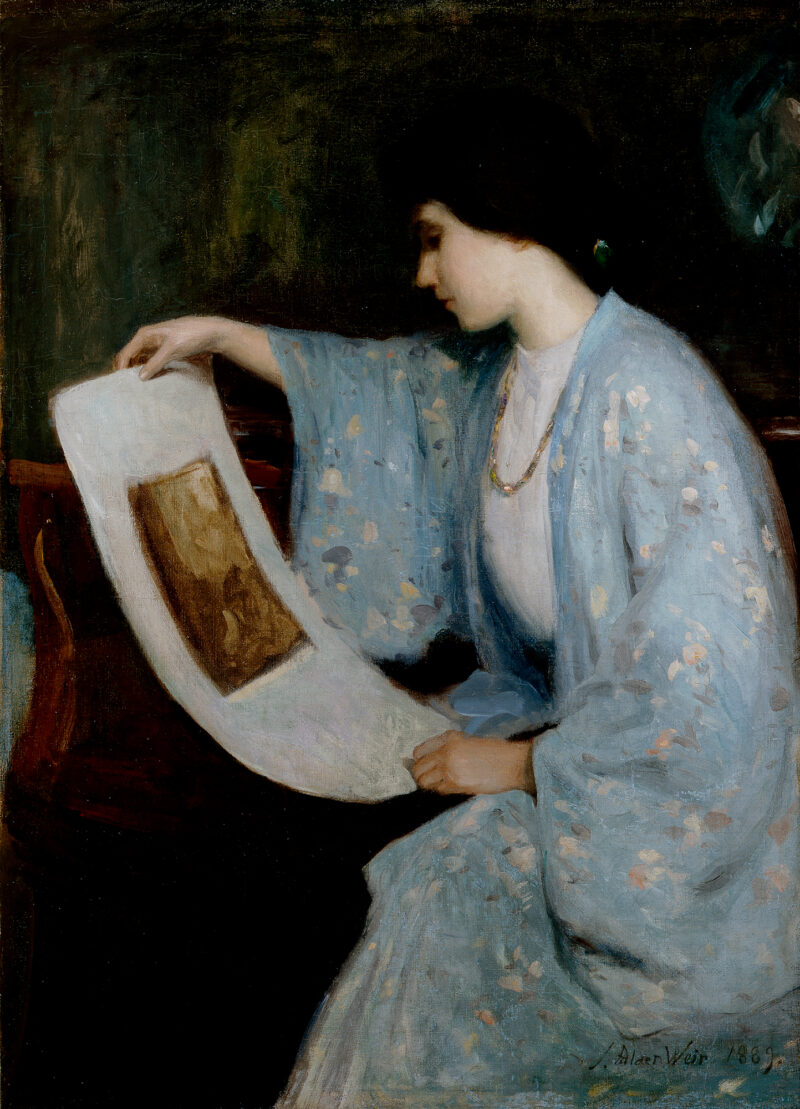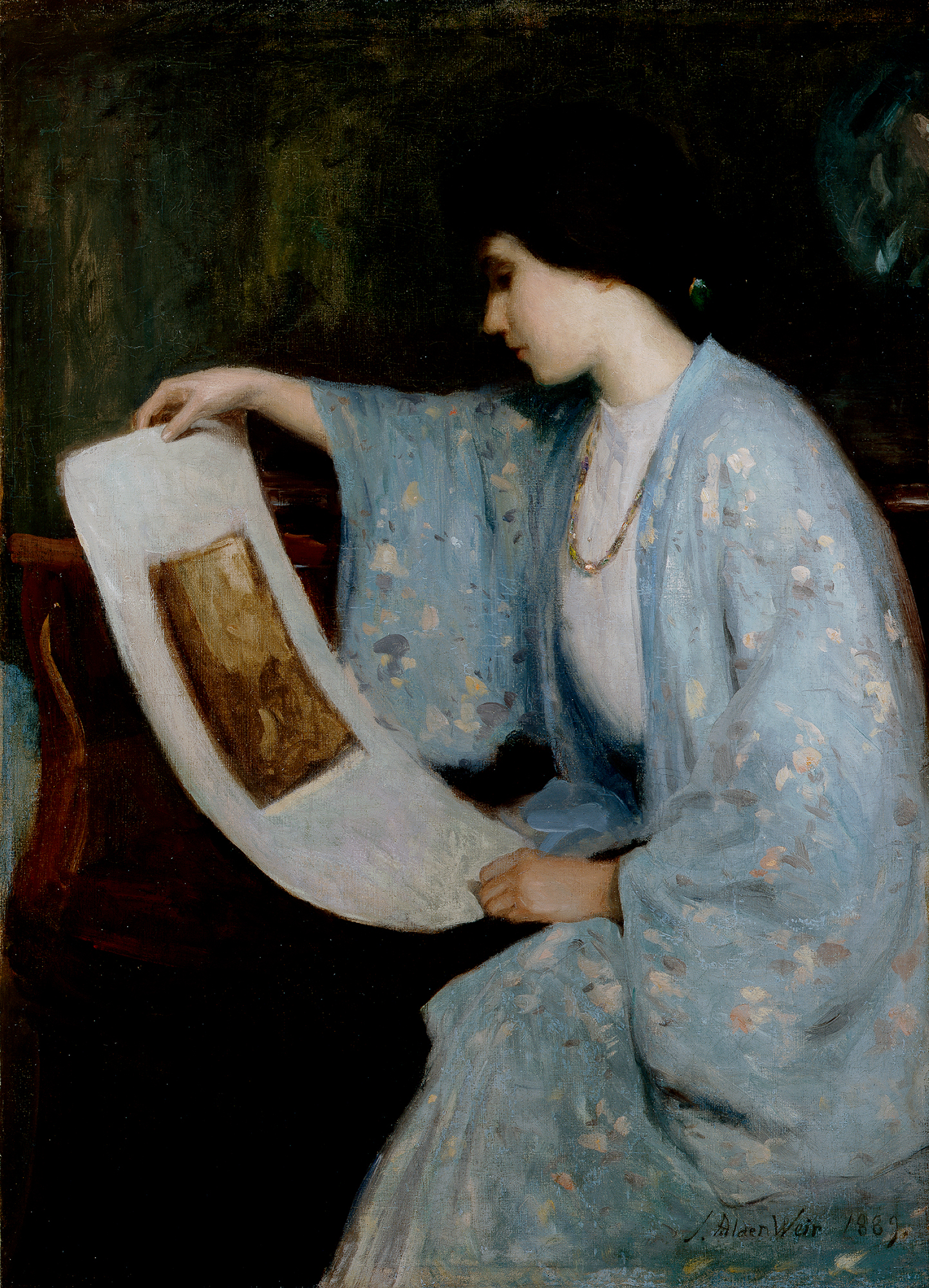
Connoisseur, The
Weir, Julian Alden
1889
Artwork Information
-
Title:
Connoisseur, The
-
Artist:
Weir, Julian Alden
-
Artist Bio:
American, 1852–1919
-
Date:
1889
-
Medium:
Oil on canvas
-
Dimensions:
42 1/4 x 30 1/4 inches
-
Credit Line:
Wichita Art Museum, Museum purchase, Friends of the Wichita Art Museum, Director's Discretionary Fund
-
Object Number:
1978.91
-
Display:
Not Currently on Display
About the Artwork
Julian Alden Weir (American, 1852-1919)
The Connoisseur, 1889
Oil on canvas, 42 ј x 30 3/8 in.
Signed and dated lower right: J. Alden Weir 1889
Gift of Friends of the Wichita Art Museum, Inc., and dedicated to Elizabeth S. Navas
1978.91
Julian Alden Weir, one of the central figures of American Impressionism, was born at West Point, New York, the son of Robert Weir, a drawing teacher and professor at the U.S. Military Academy at West Point. The youngest of sixteen children, Weir received his first art training from his father. Showing early promise, Weir began attending winter classes at the National Academy of Design starting in 1870-71.1 In 1873, financed by a generous stipend from his godmother, Mrs. Bradford Alden, Weir traveled to Paris, where he studied under Jean Leon Gerome, the great French academic painter, at the Ecole des Beaux-Arts. Returning to New York in 1877 armed with the technical skills and confidence inspired by four years in Paris, Weir supported himself by painting portraits and teaching art classes at the Cooper Union Women’s Art School and the Art Students League.
Weir painted The Connoisseur in 1889 during a transitional period within his stylistic development when he began to apply the lessons of the Impressionists to his own work.2 During this period, his paint application loosened up, his lines softened, and his palette lightened. In The Connoisseur, Weir’s debt to the Impressionists is especially evident in the light blue robe, wherein the loosely applied brushstrokes suggest a remarkable degree of translucency and delicacy. The woman’s face and hands, by comparison, are more firmly modeled and show Weir’s reluctance to abandon altogether the tenets of his academic training.
During the late 1880s Weir painted several variations on the theme of the contemplative woman, of which The Connoisseur isone fine example. Within the conspicuous display of beautiful objects, including the print, vase, and lavish robe, the woman appears as just one more beautiful object in an arrangement of precious treasures. Weir was himself an eclectic collector and connoisseur. He often advised major American collectors such as Erwin Davis and, when abroad, even occasionally made purchases on their behalf.3 Weir also began avidly collecting Japanese prints in the 1890s, the same decade in which the popularity of Japanese art and culture reached its zenith in America. Although The Connoisseur was painted several years before Weir began experimenting with Eastern stylistic conventions such as asymmetrical compositions and flattened space, the kimono-like robe is one of the earliest signs of his budding interest in Japanese art and culture.
1. Accounts of Weir’s studies at the National Academy of Design vary; see Dorothy Weir Young, The Life and Letters of J. Alden Weir (New York: Yale University Press, 1960), 13, and Doreen Bolger Burke, J. Alden Weir, An American Impressionist (Newark: University of Delaware Press, 1983), 33, 36.
2. Burke, 112.
3. Matthew Baigell, Dictionary of American Art (New York: Harper & Row, 1982), 372.
